‘Snow-cannon’ Enceladus shines up Saturn’s super-reflector moons
Radar observations of Saturn’s moons, Mimas, Enceladus and Tethys, show that Enceladus is acting as a ‘snow-cannon’, coating itself and its neighbours with fresh water-ice particles to make them dazzlingly reflective. The extreme radar brightness also points to the presence of ‘boomerang’ structures beneath the surface that boost the moons’ efficiency in returning the microwave signals to the spacecraft. The results will be presented at the EPSC-DPS Joint Meeting 2019 in Geneva by Dr Alice Le Gall.
Dr Le Gall and a team of researchers from France and the US have analysed 60 radar observations of Saturn’s inner moons, drawing from the full database of observations taken by the Cassini mission between 2004 and 2017. They found that previous reporting on these observations had underestimated the radar brightness by a factor of two.
Unprotected by any atmospheres, Saturn’s inner moons are bombarded by grains of various origins which alter their surface composition and texture. Cassini radar observations can help assess these effects by giving insights into the purity of the satellites’ water ice.
The extreme radar brightness is most likely related to the geysers that pump water from Enceladus’s internal ocean into the region in which the three moons orbit. Ultra-clean water ice particles fall back onto Enceladus itself and precipitate as snow on the other moons’ surfaces.
Dr Le Gall, of LATMOS-UVSQ, Paris, explained: “The super-bright radar signals that we observe require a snow cover that is at least a few tens of centimetres thick. However, the composition alone cannot explain the extremely bright levels recorded. Radar waves can penetrate transparent ice down to few meters and therefore have more opportunities to bounce off buried structures. The sub-surfaces of Saturn’s inner moons must contain highly efficient retro-reflectors that preferentially backscatter radar waves towards their source.”
The nature of these scattering structures remains a mystery. Observations of Enceladus have shown a variety of surface and subsurface features, including ice-blocks, pinnacles, and dense collections of fractures in the surface caused by thermal stress or impacts. However, it has not been demonstrated that these would cause the extreme radar brightness observed at the moons.
More exotic structures, such as blade-like features called penitentes or bowl-shaped depressions in the snow known as sun cups, would provide the required reflective efficiency. However, it’s not clear that there is enough solar energy to sublimate the ice and form such structures.
Dr Le Gall and colleagues have now developed a series of models to test whether specific shapes are acting as effective retro-reflectors or whether random scattering events caused by fractures in the surface are combining to enhance the reflection of the signal back towards the spacecraft.
“So far, we don’t have a definitive answer,” said Dr Le Gall. “However, understanding these radar measurements better will give us a clearer picture of the evolution of these moons and their interaction with Saturn’s unique ring environment. This work could also be useful for future missions to land on the moons.”
Further information
Saturn’s inner moons: why are they so radar-bright? Alice Le Gall, Richard West, Léa Bonnefoy, Valérie Ciarletti, Syphax Rahmouni, and Yann Hervé. EPSC-DPS 2019
https://meetingorganizer.copernicus.org/EPSC-DPS2019/EPSC-DPS2019-454-2.pdf
Images
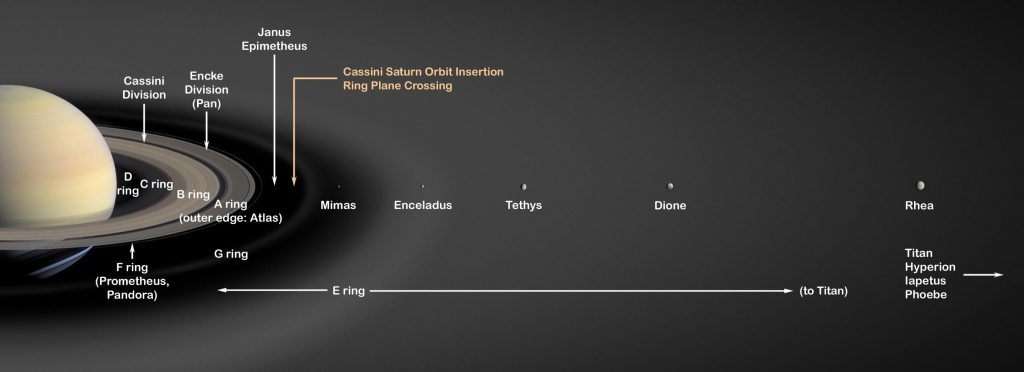
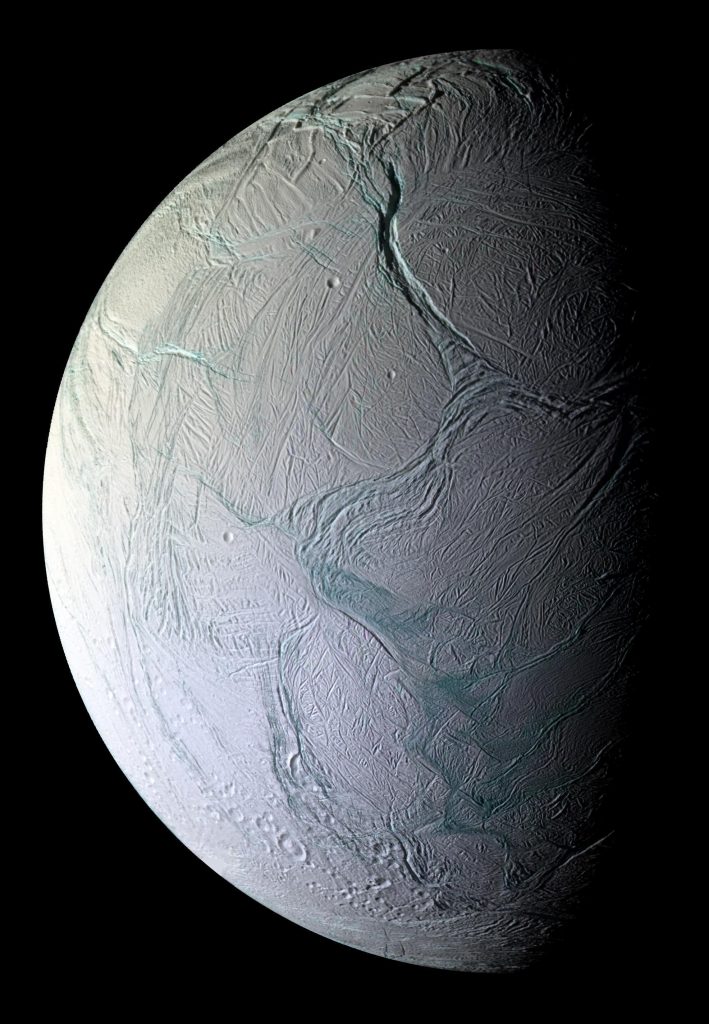
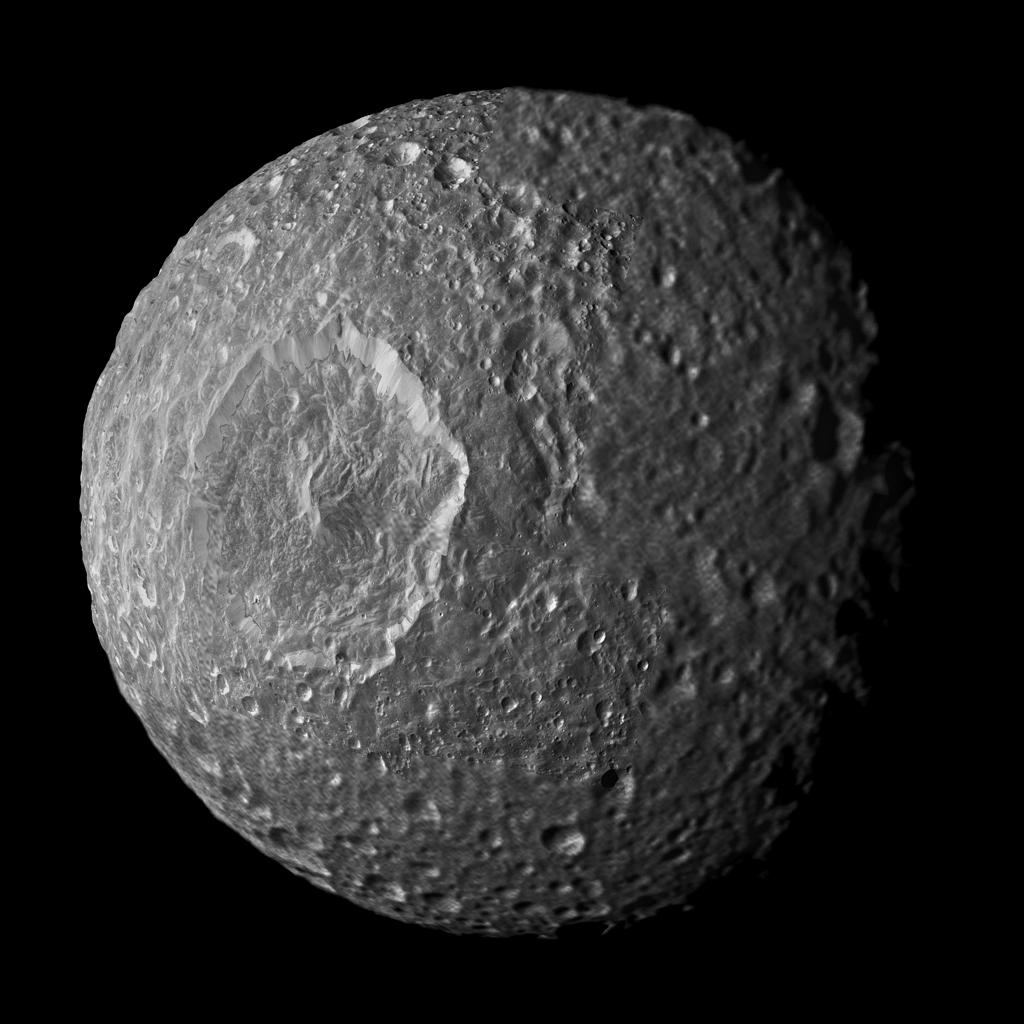
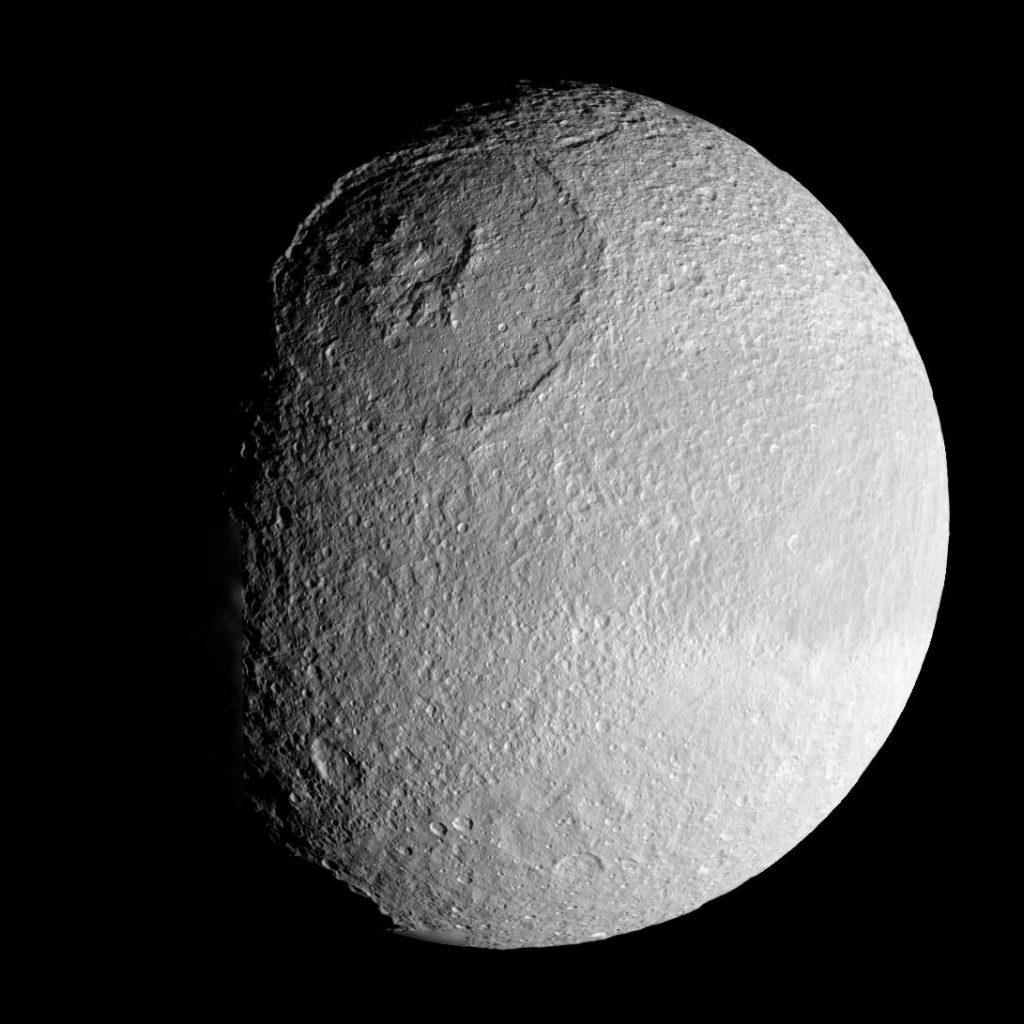
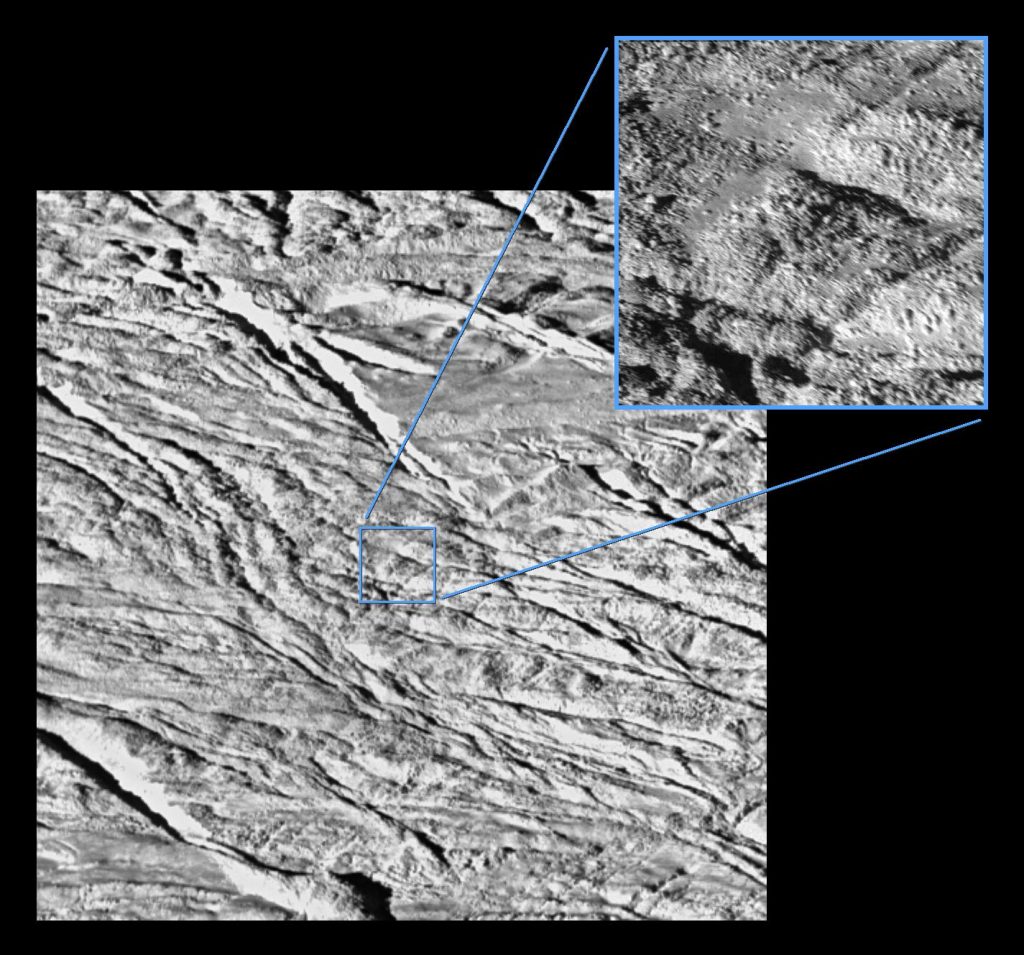
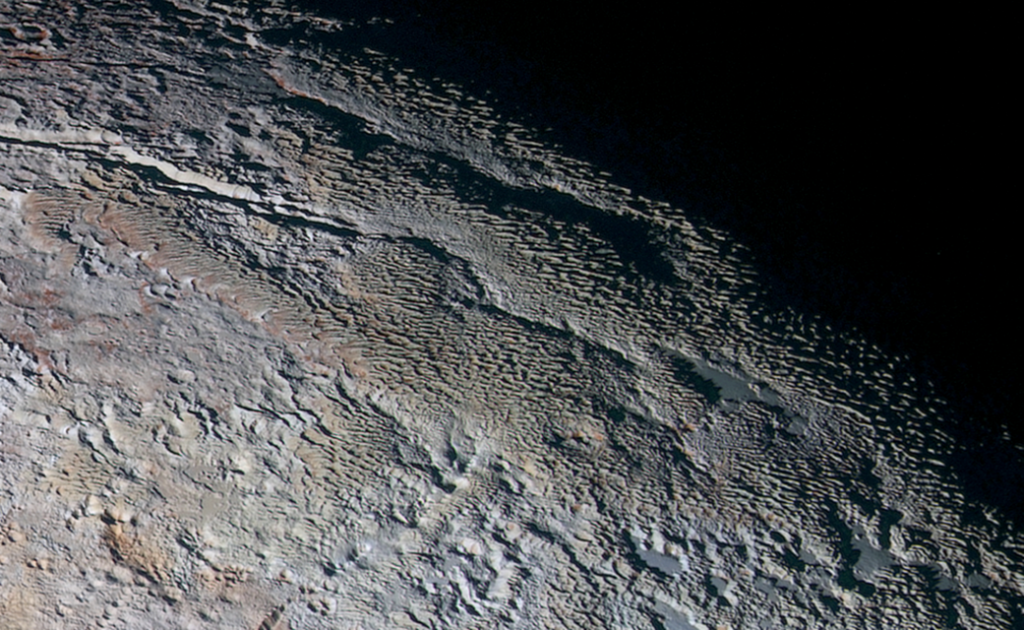
Science Contact
Alice Le Gall
LATMOS- UVSQ (Université Paris-Saclay)
Paris
France
alice.legall@latmos.ipsl.fr
Media contact
Anita Heward
EPSC Press Officer
+44 7756 034243
epsc-dps-press@europlanet-society.org
Livia Giacomini
EPSC Press Officer
epsc-dps-press@europlanet-society.org
Adriana Postiglione
EPSC Press Officer
epsc-dps-press@europlanet-society.org
Shantanu Naidu
DPS Press Officer
dpspress@aas.org
Notes for Editors
EPSC-DPS Joint Meeting 2019
The 2019 Joint Meeting (www.epsc-dps2019.eu) of the European Planetary Science Congress (EPSC) of the Europlanet Society and the Division for Planetary Sciences (DPS) of the American Astronomical Society (AAS) will take place at the Centre International de Conférences de Genève (CICG), Geneva, Switzerland, from Sunday 15 to Friday 20 September 2019. More than 1950 abstracts have been submitted and over 1500 planetary scientists from Europe, the US and around the world are expected to attend the meeting, making it one of the largest gatherings of planetary scientists held in Europe to date.
The EPSC-DPS Joint Meeting 2019 will be the third time that EPSC and the DPS Annual Meeting have been held together.
Follow: @europlanetmedia #EPSCDPS2019
Europlanet
The Europlanet Society, launched in September 2018, is an organization for individual and corporate members to promote the advancement of planetary science and related fields in Europe. The Society provides Europe’s planetary science community with a platform to exchange ideas and personnel, share research tools, data and facilities, define key science goals for the future, and engage stakeholders, policy makers and European citizens with planetary science. The Europlanet Society is the parent organisation of the European Planetary Science Congress (EPSC).
Europlanet Society website: www.europlanet-society.org
EPSC-DPSC 2019 Joint Meeting 2019 website: www.epsc-dps2019.eu
DPS
The Division for Planetary Sciences (DPS), founded in 1968, is the largest special-interest Division of the American Astronomical Society (AAS). Members of the DPS study the bodies of our own solar system, from planets and moons to comets and asteroids, and all other solar-system objects and processes. With the discovery that planets exist around other stars, the DPS has expanded its scope to include the study of extrasolar planetary systems as well.
The AAS, established in 1899, is the major organization of professional astronomers in North America. The membership (approx. 7,500) also includes physicists, mathematicians, geologists, engineers, and others whose research interests lie within the broad spectrum of subjects now comprising contemporary astronomy. The mission of the AAS is to enhance and share humanity’s scientific understanding of the universe, which it achieves through publishing, meeting organization, education and outreach, and training and professional development.

